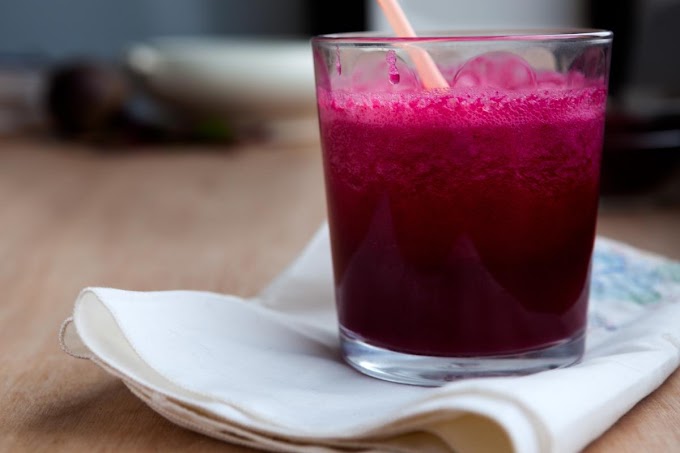Smoothies are the perfect blend of taste, health, and convenience, making them an ideal option for a quick breakfast, post-workout refuel, or refreshing snack. One of the simplest and most delicious smoothie combinations is yogurt with frozen fruit. This combo provides a creamy texture, vibrant flavor, and a nutritional punch. Whether you’re a smoothie novice or a seasoned pro, this guide will walk you through the steps to create the perfect smoothie with yogurt and frozen fruit, along with tips to customize your blend to fit your tastes and dietary needs.
Why Use Yogurt and Frozen Fruit?
Yogurt and frozen fruit are smoothie staples for a reason. Yogurt is packed with protein, calcium, and probiotics, which are great for gut health. It adds a creamy texture and a tangy flavor that balances the sweetness of fruit. Frozen fruit, on the other hand, gives your smoothie a thick, icy consistency without the need for additional ice, which can dilute the flavor. Plus, frozen fruits are just as nutritious as fresh ones, sometimes even more so, as they are picked and frozen at their peak ripeness, preserving vitamins and minerals.
Step-by-Step Guide to Making a Smoothie with Yogurt and Frozen Fruit
1. Gather Your Ingredients
Before you start blending, make sure you have all your ingredients ready. Here's what you'll need:
Yogurt: Plain Greek yogurt is a popular choice because of its high protein content and thick texture, but you can use any yogurt you like, including flavored or non-dairy options like coconut or almond yogurt.
Frozen Fruit: Choose your favorite fruits or a combination. Berries (strawberries, blueberries, raspberries), mango, pineapple, and bananas are all excellent options. You can buy pre-packaged frozen fruit or freeze your own.
Liquid: You’ll need some liquid to help blend the smoothie to the right consistency. Options include water, milk (dairy or non-dairy), or juice.
Sweetener (Optional): Depending on your taste and the sweetness of the fruit you’re using, you might want to add a bit of honey, maple syrup, or agave nectar.
Add-ins (Optional): To boost the nutritional value of your smoothie, consider adding extras like chia seeds, flaxseeds, protein powder, spinach, or oats.
2. Measure the Ingredients
The quantities of each ingredient can vary based on your personal preferences, but a general guideline is:
1 cup of yogurt
1 to 1.5 cups of frozen fruit
1/2 to 1 cup of liquid
If you’re adding sweeteners or other extras, start with small amounts and adjust to taste.
3. Blend the Smoothie
Once you have all your ingredients measured out, it’s time to blend. Here’s how to do it:
Add the Liquid First: Start by pouring your liquid into the blender. This helps the blades move smoothly and prevents the frozen fruit from getting stuck.
Add the Yogurt: Next, add the yogurt on top of the liquid.
Add the Frozen Fruit: Finally, add the frozen fruit. If you’re using additional ingredients like sweeteners or protein powder, add them now.
Blend Until Smooth: Start blending on a low setting to break down the fruit, then gradually increase the speed. Blend until the smoothie is creamy and all the ingredients are fully incorporated. This usually takes about 30-60 seconds, depending on the power of your blender.
Adjust Consistency (If Needed): If your smoothie is too thick, add more liquid and blend again. If it’s too thin, add more frozen fruit or a few ice cubes.
4. Taste and Adjust
Before pouring your smoothie into a glass, give it a taste. If it’s not sweet enough, add a bit of sweetener and blend again. If it’s too sweet, you can balance it out by adding more yogurt or a squeeze of lemon juice. This step ensures that your smoothie is just the way you like it.
5. Serve and Enjoy
Pour your smoothie into a glass or to-go cup, and enjoy! If you want to get fancy, you can top your smoothie with fresh fruit, granola, nuts, or seeds for added texture and flavor.
Tips for Customizing Your Smoothie
One of the best things about smoothies is how easy they are to customize. Here are some ideas to tailor your yogurt and frozen fruit smoothie to suit your preferences:
Make It Green: Add a handful of spinach or kale for a nutrient boost. The mild flavors of these greens will blend seamlessly with the fruit.
Add Protein: For a more filling smoothie, add a scoop of protein powder, a spoonful of nut butter, or some silken tofu.
Boost the Fiber: Oats, chia seeds, and flaxseeds are great sources of fiber and can help keep you full longer. Just be sure to add a bit more liquid if using these ingredients, as they can thicken the smoothie.
Experiment with Spices: A dash of cinnamon, nutmeg, or ginger can add warmth and depth to your smoothie’s flavor.
Go Tropical: Combine frozen pineapple, mango, and coconut yogurt for a tropical twist.
Try Different Yogurts: If you want to change up the flavor, try using flavored yogurt or a dairy-free alternative like almond or coconut yogurt. These can add new flavors and cater to dietary restrictions.
Health Benefits of Yogurt and Frozen Fruit Smoothies
Aside from being delicious, smoothies made with yogurt and frozen fruit come with numerous health benefits:
Rich in Nutrients: Yogurt provides calcium, vitamin B12, and riboflavin, while frozen fruits are loaded with vitamins, minerals, and antioxidants.
Good for Digestion: The probiotics in yogurt can promote a healthy gut, aiding digestion and boosting immunity.
High in Protein: Greek yogurt, in particular, is a good source of protein, which helps build and repair tissues and keeps you feeling full.
Low in Added Sugar: When you make your smoothies at home, you control the amount of sugar that goes in, making it a healthier option compared to store-bought versions.
Frequently Asked Questions
Can I use fresh fruit instead of frozen?
Absolutely! Fresh fruit works just as well, but you might want to add a few ice cubes to achieve the thick, frosty consistency typical of smoothies made with frozen fruit.
How long can I keep a smoothie in the fridge?
Smoothies are best consumed fresh, but you can store them in the fridge for up to 24 hours. Just give it a good shake or stir before drinking, as the ingredients may separate over time.
Can I make a smoothie without a blender?
While a blender is the most effective tool for making smoothies, you can use a food processor or an immersion blender in a pinch. If you don’t have any of these, you can try mashing the fruit with a fork and mixing it with yogurt, though the texture won’t be as smooth.
Conclusion
Making a smoothie with yogurt and frozen fruit is a quick, easy, and delicious way to nourish your body and satisfy your taste buds. With endless possibilities for customization, you can enjoy a different smoothie every day without getting bored. Whether you stick to a classic combination or experiment with new flavors and add-ins, you’re sure to end up with a nutritious and satisfying drink. So, grab your blender and start creating your perfect smoothie today!








Social Plugin